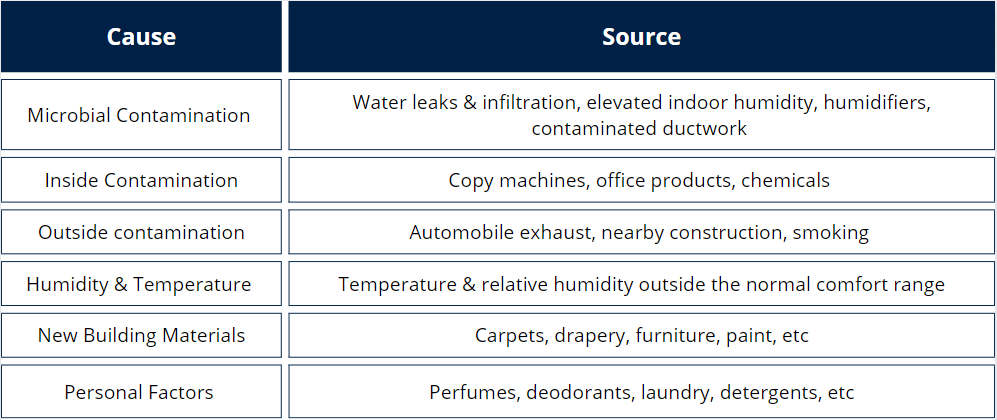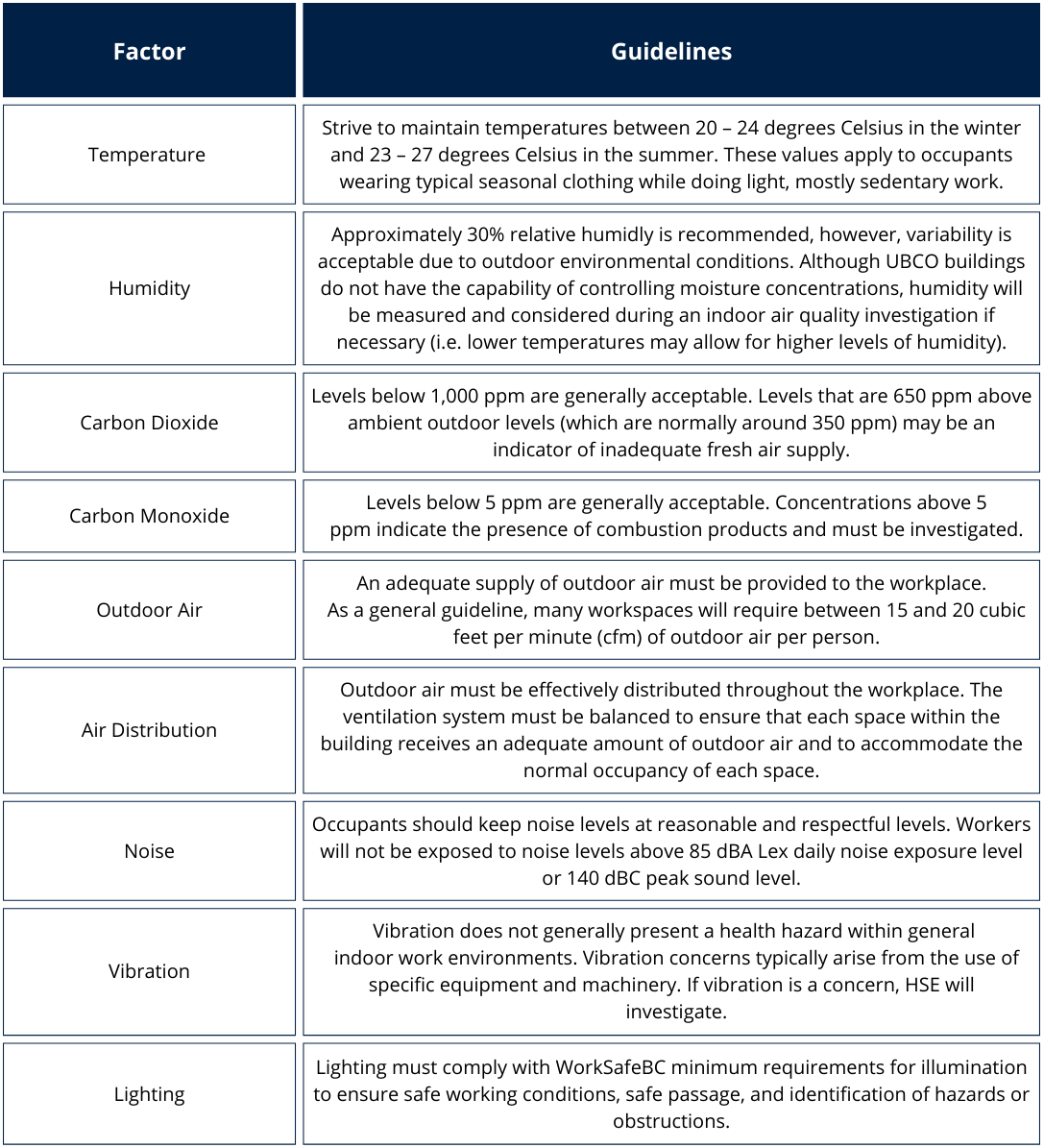Indoor Environmental Quality (IEQ)

People spend a significant amount of time indoors. Indoor Environmental Quality (IEQ) deals with the contaminants of interior air that could effect the health and comfort of UBC building occupants.
To learn more about IEQ click the topics below:
Health symptoms for poor Indoor Environmental Quality range depending on personal susceptibility. Common symptoms experienced by individuals include:
- Headaches
- Sinus congestion
- Itchy throat
- Coughing
- Shortness of breath
- Sneezing
- Watery eyes
- Nausea
- Fatigue
Poor IEQ can also exacerbate existing allergy or asthma symptoms.
If you are concerned about poor Indoor Environmental Quality, please follow these steps:
- Step 1: Identify the source, if possible
- Step 2: Determine if the source is building related (temperature, humidity or lighting issues)
- Step 3: If the source is an immediate issue related to building systems (ie. too hot today, suspect ventilation has been turned off or broken down), contact Facilities Management
- Step 4: If the cause is not an immediate issue related to building systems and is an on-going concern, complete an IEQ Concern Report and submit to ok@ubc.ca for review
The following tips will help promote good indoor environmental quality in your space:
- Keep windows closed at all times (optimizes building ventilation)
- Keep laboratory doors closed at all times (optimizes building ventilation)
- Use low-VOC markers
- Clean and dust workplace regularly
Indoor Environmental Quality is everyone’s responsibility. For more information on how to take control of the air you breathe take a moment to read our Indoor Environmental Quality Brochure.




